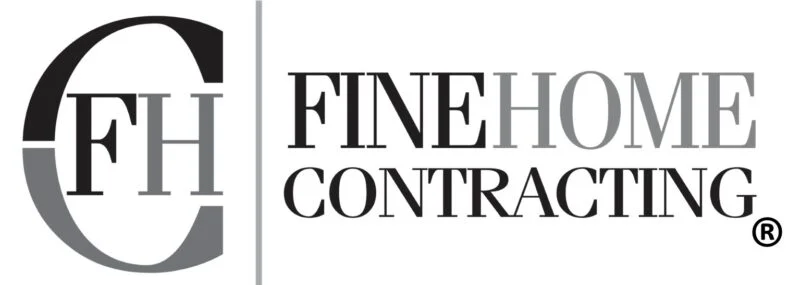The allure of an FHA203(k) renovation project is hard to resist – turning a fixer-upper into your dream home, all wrapped up in a single mortgage package. However, as with any substantial undertaking, these projects can sometimes hit roadblocks. To ensure a smooth and successful renovation, it’s crucial to be aware of the common issues that may arise and to arm yourself with strategies to prevent them. In this comprehensive guide, we’ll delve into potential pitfalls and offer valuable tips to help you navigate the FHA203(k) renovation process with confidence.
Common Issues with FHA203(k) Renovations
Budget Overruns
Issue: One of the most prevalent challenges in FHA203(k) renovations is budget overruns. Unforeseen expenses can quickly accumulate, putting a strain on your finances.
Prevention: Begin by crafting a meticulously detailed budget that includes a contingency fund for unexpected costs. Maintaining regular communication with your contractor and inspector is essential to ensure the project stays within budget.
Approval Delays
Issue: The approval process for FHA203(k) loans can be lengthy, leading to project delays.
Prevention: Start the approval process as early as possible and collaborate with a knowledgeable lender experienced in FHA203(k) loans. Efficiently gathering and submitting the required documentation can also expedite the process.
Incomplete Documentation
Issue: Inadequate or incorrect documentation can lead to complications, disapproval of the loan, or delays in receiving funds.
Prevention: Maintain thorough records of all expenses, approvals, and project details. Seek guidance from professionals well-versed in the specific documentation requirements of FHA203(k) loans.
Contractor Conflicts
Issue: Misunderstandings or disputes with contractors can result in subpar work or unexpected project delays.
Prevention: Careful contractor selection is paramount. Choose experienced contractors with a solid track record, request multiple quotes, and ensure all agreements are in writing.
Best Practices for a Successful FHA203(k) Renovation
Meticulous Planning – Tip: Start with a detailed project plan that outlines the scope of work, project timelines, and a comprehensive budget. Collaborate closely with your contractor to ensure your vision aligns with the plan.
Realistic Budgeting – Tip: Incorporate a contingency fund of at least 10% into your budget to account for unexpected expenses that can arise during renovations.
Consult a 203(k) Specialist – Tip: Partner with a lender and inspector who specialize in FHA203(k) loans. Their expertise can be invaluable in streamlining the process.
Open Communication – Tip: Maintain open and frequent communication with your contractor, lender, and inspector. Regular updates and check-ins can help address issues promptly.
Stringent Documentation – Tip: Keep comprehensive records of every transaction, payment, and approval. The more detailed and organized your documentation, the smoother the process will be.
FAQ
Yes, you can use a renovation loan to finance an investment property, particularly with Homestyle and Choice renovation loans, which are designed to accommodate not only owner-occupants but also investors and second-home buyers. These loan types offer the flexibility to finance a wide range of renovation projects, from basic repairs to extensive remodels, including luxury upgrades and improvements aimed at enhancing energy efficiency or disaster resilience. This makes them an attractive option for investors looking to increase the value of their properties or tailor them to specific rental markets.
FHA203k, Homestyle, and Choice renovation loans differ primarily in eligibility criteria, with FHA203k being more accessible for lower credit scores and focusing on 1-4 unit residential properties requiring various renovations, including structural changes. Homestyle loans cater to a broader audience including investors, offering higher loan limits and flexibility for nearly any type of renovation, including luxury updates, across diverse property types. Choice loans are similar to Homestyle in terms of flexibility and target audience but stand out for their emphasis on financing renovations that improve disaster resilience, energy efficiency, or accessibility, providing unique advantages for specific renovation goals.
Factors to consider include your credit score, the type and scale of your renovation, and your preferred interest rate structure.
The Standard 203k is suitable for major structural repairs, while the Limited 203k is ideal for minor renovations and cosmetic improvements. Standard 203ks may require a HUD inspection, but can exceed $35,000, while limited 203ks may not require an inspection, but cannot exceed $35,000.
Improving curb appeal on a budget can be achieved through landscaping, fresh paint, and small exterior updates, which typically cost between $1,000 to $5,000.
The cost of renovating a kitchen in CT can vary widely, but budget-friendly options often start at around $15,000, with more extensive upgrades averaging between $20,000 to $35,000.
Yes, an FHA 203k loan allows you to purchase and renovate a duplex in need of significant repairs.
The renovation timeline can vary, but it typically takes three to six months, depending on the extent of the renovations.
Remodeling an investment unit is a great way to attract higher-paying tenants: Current trends include open floor plans, energy-efficient features, and modern, durable finishes for both units.
The Standard 203k is for major renovations, while the Limited 203k is for less extensive projects on duplex properties. A limited 203k cannot exceed $35,000 in funding, but often does not require a certified HUD inspector as a standard 203k does.
Eligible renovations include structural repairs, room additions, energy efficiency upgrades, and much more. Consult your lender for a comprehensive list of qualified projects.
To qualify for an FHA 203(k) loan, you typically need a minimum credit score, sufficient income to cover loan payments, a property in need of renovation, and compliance with FHA lending limits.
The costs are similar to a traditional mortgage – down payment, closing costs, mortgage insurance. You’ll also pay the full costs of renovations on top.
The renovation period can range from 2-6 months. Simple cosmetic renovations may take 2-3 months, while larger projects replacing structural elements take 5-6 months.
No, 203(k) loans are only eligible for primary residences you plan to live in. Second homes or investment properties do not qualify.
You can qualify for a 203(k) loan with a credit score as low as 580. However, the higher your score, the better rate you’ll likely receive. Scores of 640+ are ideal.
Fine Home Contracting is one of Connecticut’s largest 203k contractors. For other options, we recommend checking 203kcontractors.com.
FHA203k Renovation Loans can be used for a variety of property types, including single-family homes, multi-unit properties (up to four units), and condominiums. However, the property must meet certain eligibility criteria, such as being the borrower’s primary residence or an investment property.
While it is possible to hire a contractor who is not familiar with 203k loans, it is advisable to work with a contractor experienced in handling such projects. Contractors who have prior experience with 203k loans understand the unique requirements and processes involved, which can help prevent delays and ensure a smoother renovation experience. Their expertise can also contribute to accurate cost estimates and adherence to FHA guidelines, reducing the risk of complications during the project. We always recommend using an FHA certified 203k specialist with good references.
A wide range of renovations can be financed through a 203k loan. Eligible improvements include structural repairs, room additions, kitchen and bathroom remodels, energy efficiency upgrades, and accessibility modifications. However, luxury improvements that are not considered necessary for the property’s functionality, such as a swimming pool or a tennis court, are generally not eligible for financing.
The duration of the renovation process with a 203k loan can vary depending on the complexity of the project and the contractor’s efficiency. On average, it may take several months to complete the renovation, including the time required for planning, obtaining permits, and carrying out the construction work. Working closely with your contractor and maintaining open communication can help ensure a smooth and timely renovation process.
Contractors working on a 203k loan project are paid through a specific payment process. Once the loan is approved, funds are typically held in an escrow account. The contractor submits invoices for completed work, and after verification, the lender releases funds to pay for the completed portion of the renovation. It’s crucial for contractors to keep accurate records, provide necessary documentation, and adhere to the agreed-upon payment schedule.
The cost of hiring a contractor for a 203k loan renovation can vary depending on factors such as the scope of work, location, and contractor’s rates. While it’s true that 203k contractors may charge higher fees due to their expertise in handling these specialized loans, it’s essential to consider the benefits they bring. They are experienced in navigating the complexities of 203k loans, ensuring compliance with FHA guidelines, and managing the renovation process efficiently.
Yes, it is possible to act as your own contractor on a 203k loan. However, it’s important to note that being your own contractor requires extensive knowledge of construction and project management. Additionally, you will need to meet the FHA guidelines for self-contracting, provide detailed plans and cost estimates, and assume full responsibility for the project’s successful completion.
The FHA 203k loan is a renovation or construction loan, that is backed by the Federal Housing Administration. Both buyers and refinancing customers can combine the traditional “home improvement” loan with a standard FHA mortgage, which allows the homeowners to borrow their renovation costs.








